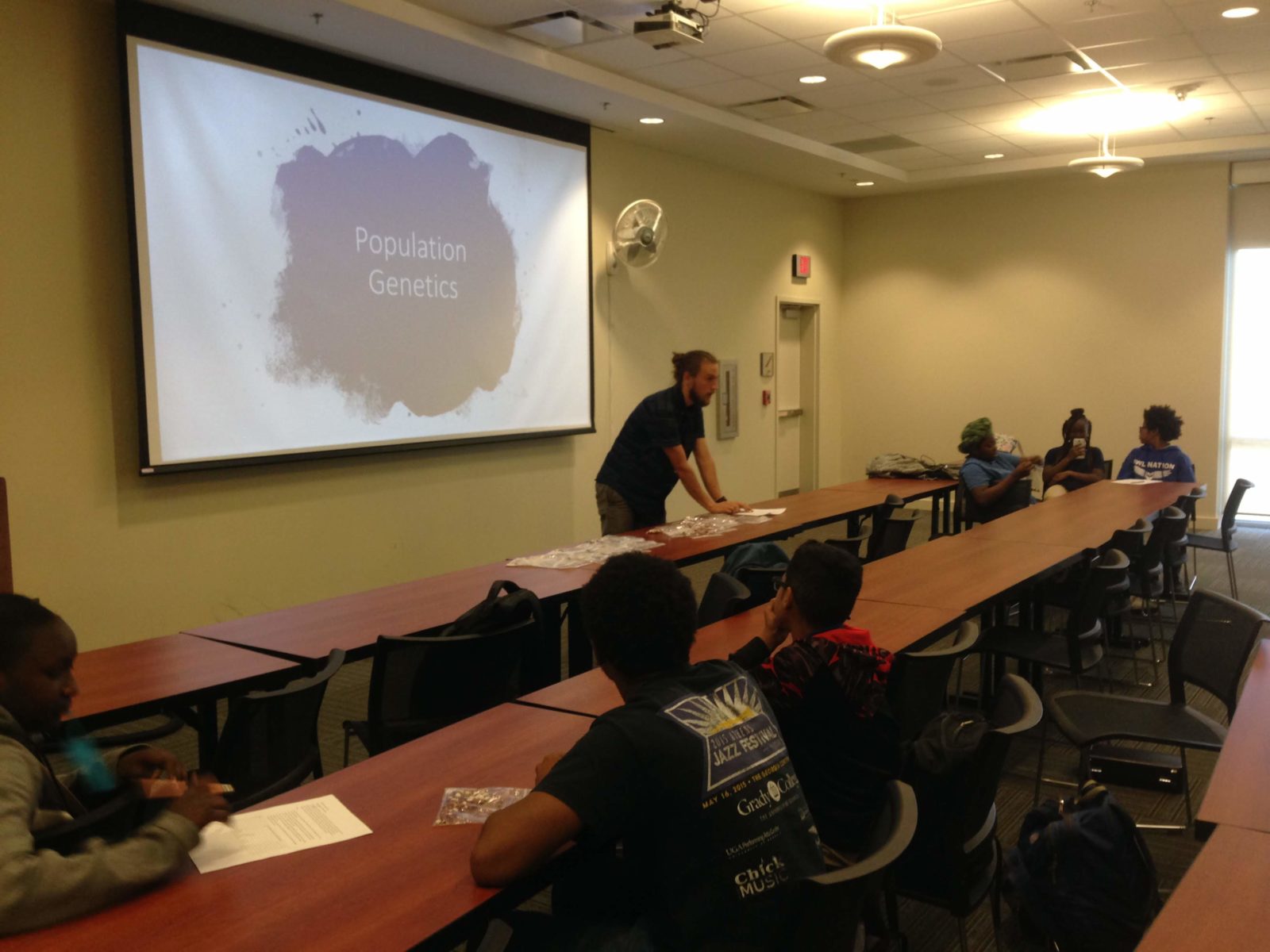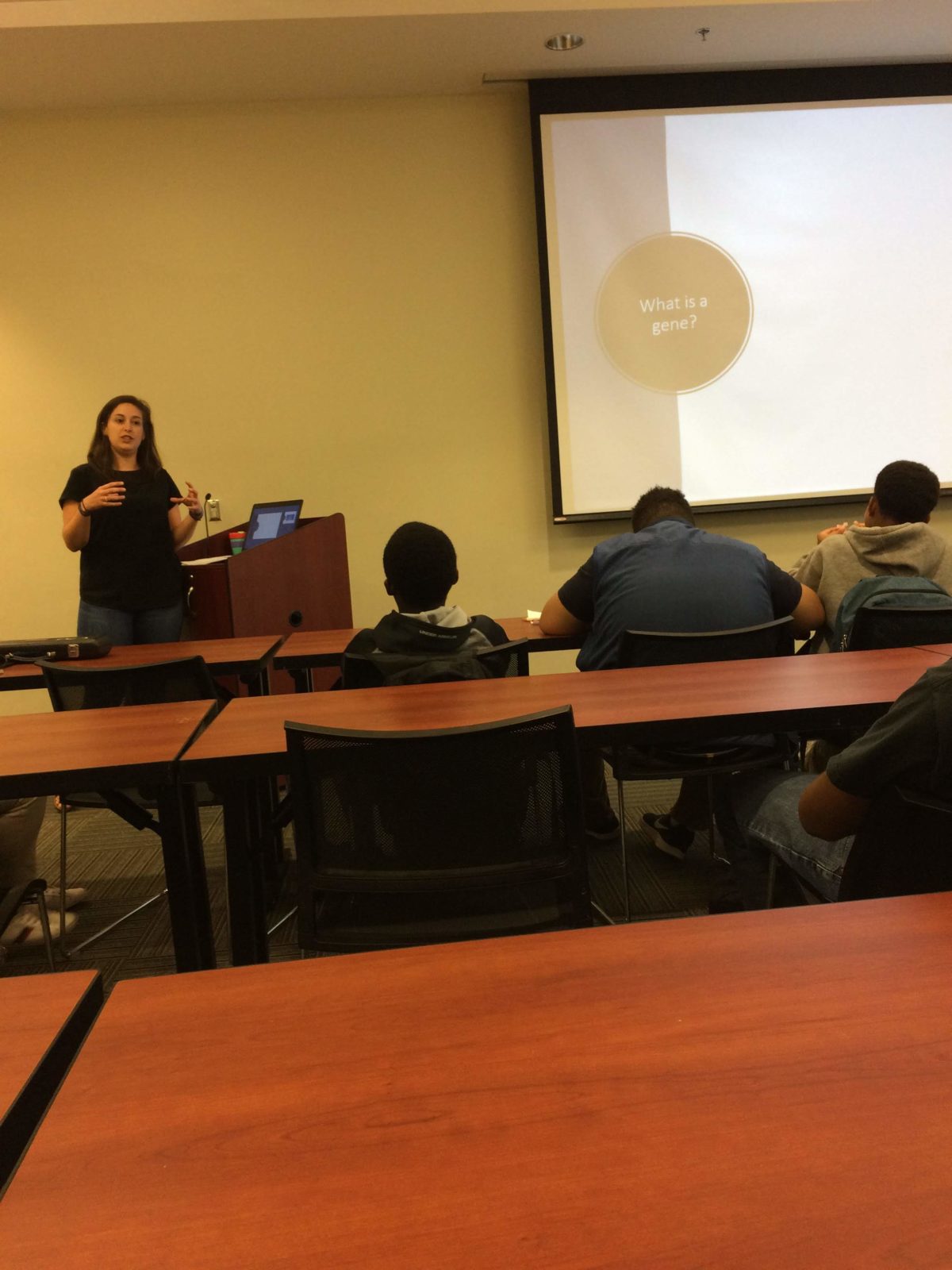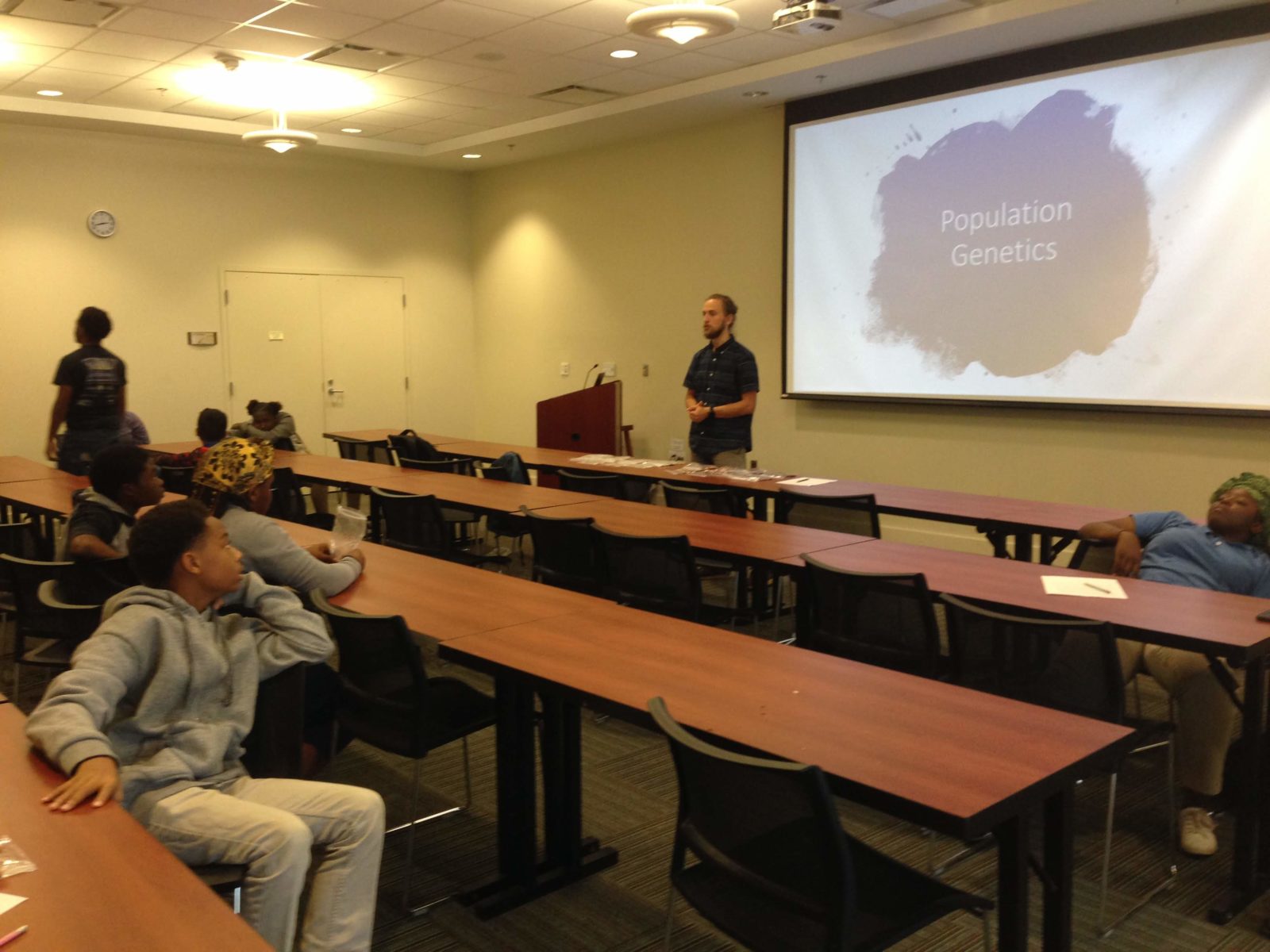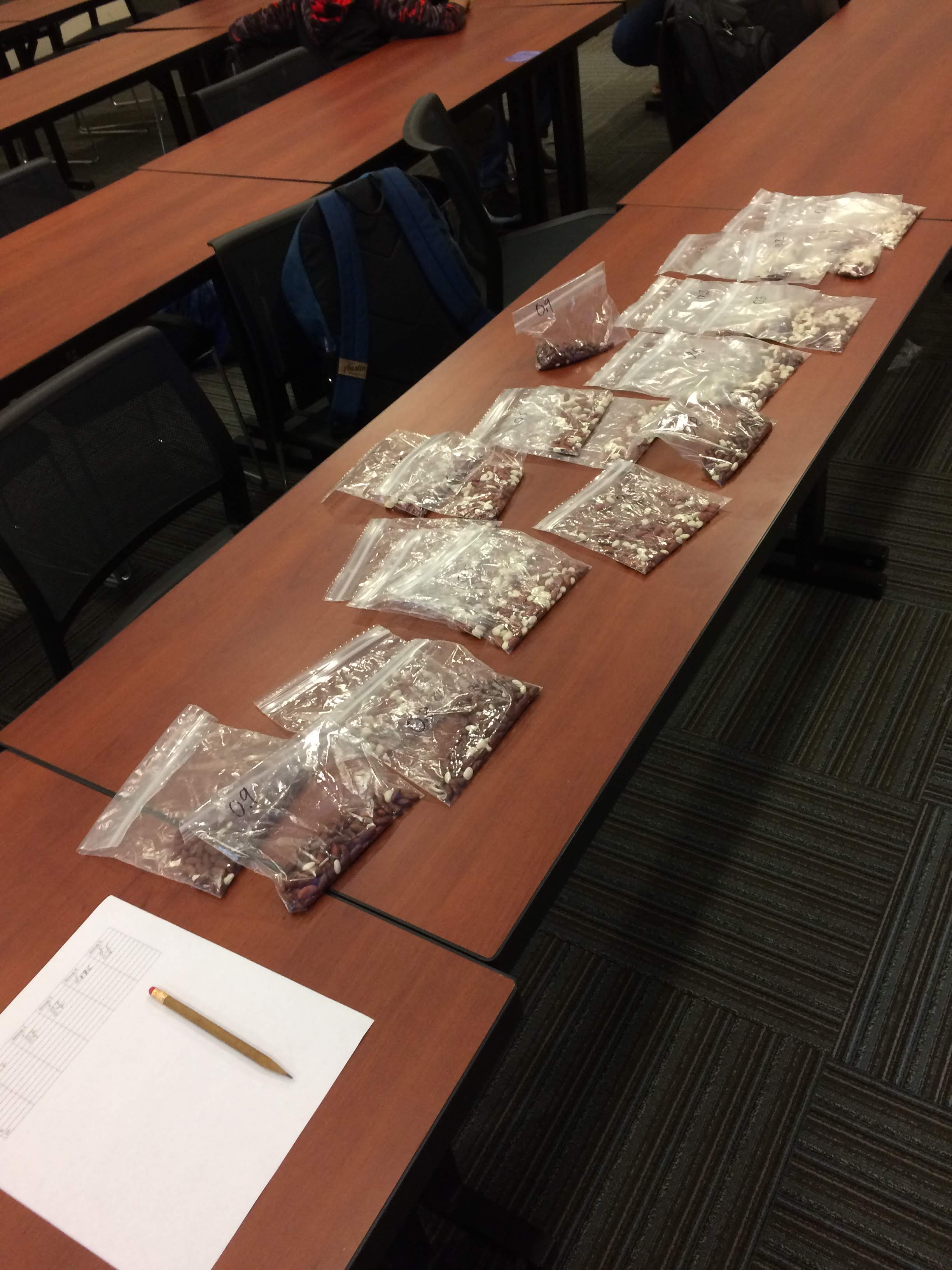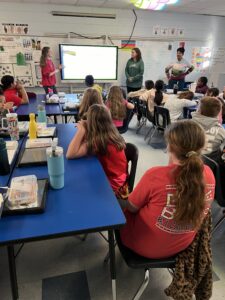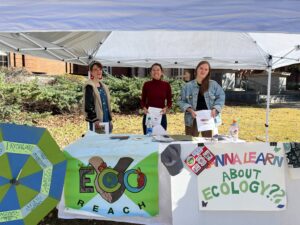EcoReach returned to the public library event last week for our monthly event, and we taught the students all about population genetics!
With this activity, we explored genetic drift and natural selection using red and white beans to simulate gene frequencies in a population. Now, you may be asking, “what is genetic drift and natural selection?” Let’s quickly go through some definitions.
Genetic drift: random change in gene frequencies.
Natural Selection: is a change in gene frequencies in a population driven by something in the environment.
Gene: is a segment of DNA that contains all of the information necessary for the expression of a protein or structural RNA.
Alleles: variants of a single gene, found in the same position or locus on a chromosome; they represent the possibilities for variation in a population with respect to a particular inherited trait.
Gene frequency: represents how often an allele occurs in a population. The number of alleles for a particular trait is divided by the total number of genes in the sample of the population you are counting. Gene frequencies are always expressed in decimals, so that if a gene (allele) is present in 50% of a population, the gene frequency is 0.5.
And here is an awesome short video all about genetic drift and natural selection.
In this activity, the EcoReach volunteers introduced genetic drift and natural selection by using red and white beans to represent different populations with different “gene frequencies”. Each bean is a gene that is either a red allele (red bean) or white allele (white bean). Some bags had large numbers of beans, and other bags had small numbers of beans to represent differently sized populations.
Random genetic drift was simulated by having the students close their eyes and randomly choose beans. Once a certain number of beans were removed, they recounted the bags and recorded the new gene frequencies (the number of red and white beans). Will a small population be more or less affected by genetic drift? What is the effect of genetic drift on the populations when 5 beans are removed vs when 15 beans are removed?
Natural selection was simulated by using a paper plate with holes to represent an external factor which can contribute to which beans remain or leave a population. The different bags of beans were placed over a plate with a few small holes, and the students let a certain number of beans randomly fall through the holes. Not all beans are the same size, just like not all genes or organisms within a population are the same.
Finally, the students recorded the color of the beans that left the populations and number and color of the remaining beans in the bag. Will a small population be more or less affected by natural selection? How will different populations be affected when 5 beans (organisms) are removed vs when 15 beans (organisms) are removed due to natural selection?
To learn more about this activity or to use this in your classroom, refer to this website.
Thank you for learning with us! Follow us on Facebook, Twitter, and Instagram to see our other events and pictures!


